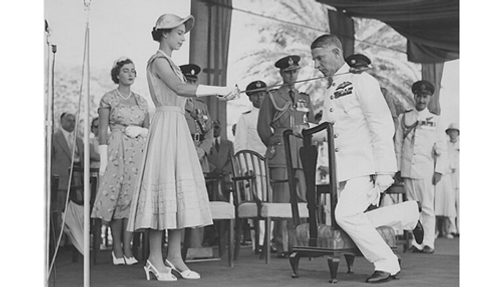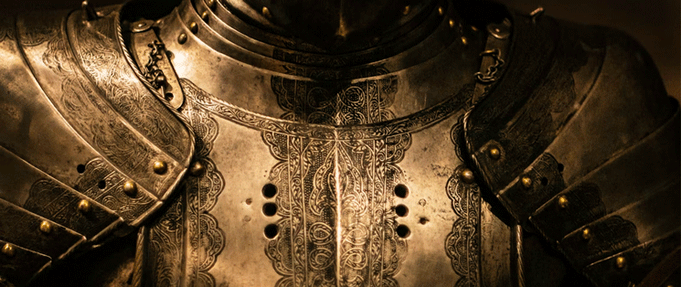Sword fights, horse dressage, and a grand feast eaten by hand. You might think I'm describing the traditions of a long-gone kingdom, and you'd be right—sort of.
The Medieval Times Dinner & Tournament, employing these customs, transports guests back to the Middle Ages. From donning a colorful crown to rooting for one of six knights, the show is not only great fun for all ages, but also captures the atmosphere of the era, albeit a somewhat glamorized version.
Although the first North American location opened in Florida more than four decades ago, the experience has only risen in popularity in recent years. Now there are 10 locations, nine of which are in the United States, including Scottsdale, Chicago, and Orlando, while the 10th is in Toronto, Canada.
The story is the same for all locations—guests are gathering for a feast at the castle of Queen Maria Isabella. There, attendees are divided into color-coded cheering sections, corresponding to one of the knights who will joust in a tournament to be the Queen's champion.
But before Medieval Times became what it is now—an entertainment and food venue enterprise—it began in late 1960s Spain as two locations with a converted barbecue restaurant.
Even before that, it existed in truth in the 11th century, with traditions of a noble family that the dinner show has since emulated, along with knights now portrayed by actors.
Read on to discover the real historical inspirations behind the dinner theater experience, and better understand why the tournament continues to captivate audiences today.
Knights in the Medieval Era
The Medieval Ages, or medieval era, lasted roughly 1,000 years, beginning with the fall of the Western Roman Empire. The period is marked not only by expansion and religious ideals, but by political upheaval and violence, and is largely considered the gateway into the modern era.
With a rapid increase in population came different ways of organizing society, particularly that of manorialism and feudalism, which would have lasting effects on civilizations.
In the Early Middle Ages, knights were originally attendants or foot soldiers, but the status of knighthood rose around 800 A.D. Knights were created to protect within the feudal system of Europe, serving lords, while defending the land and its inhabitants.
The process of becoming a knight became standardized, with boys, beginning at the age of around seven, deciding on the career.
First, a boy would work for his father as a page—that is, an apprenticeship for those of noble origin like knights or lords—and then join the house of the feudal lord his father served. During this time, he would hunt alongside huntsmen and receive academic training from priests or chaplains.
He would also gain more formal military instruction at 14 as a squire, accompanying the knights on expeditions, and becoming educated in the ways of chivalry (more on this later).
Finally, at the age of 21, once he had gained adequate skills and the money had been raised for his knightly equipment, he would be knighted—whether by a simple ceremony on the battlefield or an elaborate banquet held at royal court. Procedure, though, was the touching of a flat sword against both shoulders—the acknowledgment of knighthood that persists now even into modern times.

Elizabeth II knighting Claude Pelly (1954).
Photo Credit: Wikimedia CommonsKnights in the Crusades
With the evolution of knighthood came the development of chivalry. What Britannica describes as "a Christian ideal of knightly behaviour," the custom came to involve respect for the Church, loyalty to one's feudal lord, involving the protection of the land and those of lower classes, and maintaining general honor.
To embody these ideals, from the end of the 11th century, knights embarked on crusades. On behalf of Christian Europe, these knights attacked the Holy Lands of the Middle East in a series of religious wars.
Directed and supported by the papacy, the most notable of these crusades was to claim Jerusalem and the surrounding territories from Muslim rule—these sites being considered sacred to both groups.
There were eight major crusades, occurring between 1096 and 1291, that would also group knights into several military orders, such as the Knights Templar, the Teutonic Knights, and the Hospitallers.
Across the groups, their responsibilities were to defend the Holy Land while protecting Christians on their pilgrimages. Soon, these expeditions gained international appeal, motivated primarily by religion.
However, they would be overtaken by political strategy and the incentive of wealth, coming to an end by 1291—but no doubt leaving their impact on the nations and the views between them, to this day.

A 14th-century miniature of the Battle of Dorylaeum (1147), a Second Crusade battle.
Photo Credit: Wikimedia CommonsMedieval Tournaments
A tournament, which is recreated in the Medieval Times experience, was a chivalrous competition, including mêlée, hand-to-hand combat, and occasionally jousts.
The mêlée was often the center event and involved separating the knights into two sides, in which they fought with blunted weapons.
A joust—which is a more significant component of today's tournament than that of the Early Middle Ages—involved only two knights in single combat. The pair rode at each other on horses, holding out their lances to either hit the other's shield or head, or unhorse them entirely.
Finally, foot combat, which is as self-explanatory as it sounds, involves two fighters in heavy armor, competing on foot with swords or other handheld weapons.
Despite its mass popularity, tournaments were banned in England in 1130 by Henry II, likely due to their threat to public order, and would only be reinstated in 1192. One of the last tournaments held in England would be in 1342 in Doubtshale, and by then, many of the other events had become overshadowed by the interest in jousting.
Overall, the tournaments were an elaborate display with costumes, drama, and symbolism, impressing guests while also demonstrating the skill of participants.Loyalty, whether to a lord or lady, was demonstrated through clothing.
These tournaments provided entertainment as social spectacles, bringing together communities of various social classes, a tradition that persists even into modern times.
The Origins of Medieval Times Dinner Theater
All this and more contributed to what inspires the Medieval Times of today, but the event does have more specific origins.
The creator, Jose Montaner, developed two shows, inspired by the practices of the Middle Ages, in Majorca and Benidorm, Spain in the late 1960s. He transformed his farm into a barbecue restaurant, serving as a hotspot for the growing European tourism.
But around this time, a similar restaurant opened up. To stay competitive, Montaner decided to open a medieval-inspired experience with an indoor show.
Montaner drew from his own background, coming from a lineage of 11th-century knights, heralding from Aragon, Navarre, Perelada, and other kingdoms in northern Spain. With a mix of his family's history and knowledge of the period, Montaner managed to create an ever-popular attraction that has continued to bring people together and will do so for generations to come.

The front of the Medieval Times building in Lyndhurst, New Jersey (2018).
Photo Credit: Wikimedia CommonsFeatured image: Nik Shuliahin/Unsplash
